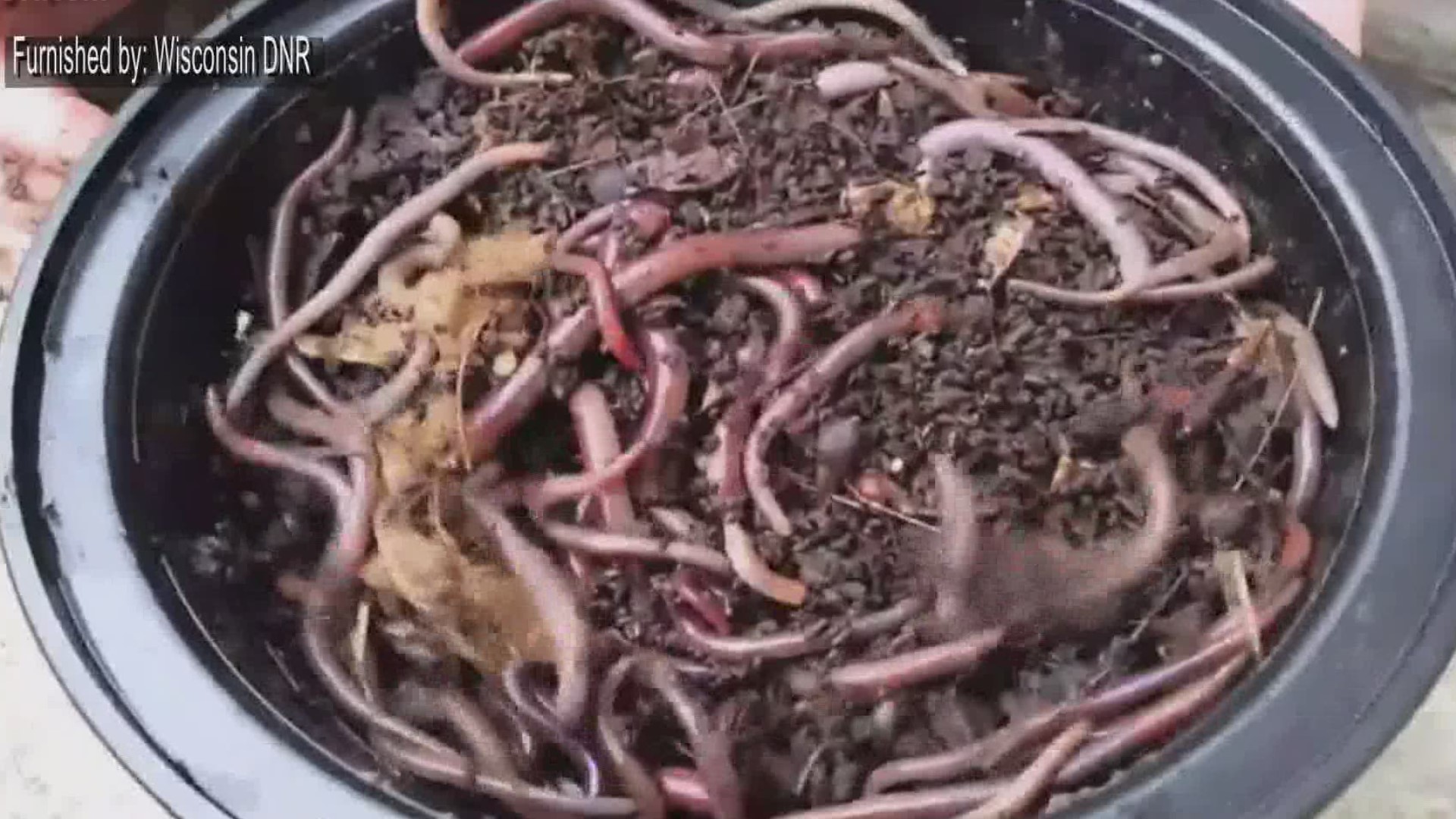MINNEAPOLIS — Editor's note: The attached video first aired on May 7, 2021
As our long winter winds down, more Minnesotans are getting their gardening tools in order, or bringing out their poles and making plans to hit the lake for some fishing. But while you're enjoying these time-honored spring activities, a professor with the University of Minnesota (U of M) wants you to keep an eye out for an invasive pest.
That's right, invasive jumping worms have wriggled their way across several Midwestern states, including Minnesota.
Ryan Heuffmeier, U of M-Duluth professor and program director of the Boulder Lake Environmental Learning Center published an "expert alert" Tuesday with a warning about the unusual worms.
While they look very similar to the European earthworms we're most familiar with, Heuffmeier says jumping worms give themselves away once they start to squirm.
"Jumping worms move less like a worm and more like a snake," he wrote. "They forcefully thrash around when disturbed. They have setae, or tiny hairs, that cover each segment entirely, unlike European earthworms that have only eight setae around each segment. Jumping worms can shed their tail when disturbed and the severed tail will keep wiggling as the worms move away from danger."
Heuffmeier said if you're still unsure, take a close look at the soil. The way the worms move around makes the dirt look more like coffee grounds, and it will easily wash away. It's this destruction of the soil that makes them qualify as a pest, and it doesn't take long for just a few worms to turn into a bigger problem.
RELATED: Gardening in a cool, wet spring
"Through their feeding and burrowing behaviors, they turn the topsoil into loose granular soil that can be easily eroded and does not support plant life well," Heuffmeier said. "Because of their ability to clone themselves, just one jumping worm can start a population, which makes them a difficult species to manage."
The best way to deal with an invasive species is to not introduce it in the first place, and Heuffmeier offered these tips to make sure you aren't helping these worms to spread:
- Check your landscaping material. Look over everything you buy before you bring it home, and ask where your mulch, compost or other supplies are coming from.
- Wait to plant. After you purchase plants for your garden, wait for one week before you plant them to make sure there aren't any worms hiding in the roots or soil.
- Throw unused bait in the trash. Keep any worms you have left after a day on the lake out of the environment by putting them in the garbage, instead of tossing them in your garden or on the ground.
This video from the Minnesota Department of Natural Resources shows what jumping worms look like in the wild, and offers more information about spotting the differences between an invasive jumping worm and European earthworm:
You can find more information about invasive jumping worms from the University of Minnesota website here.
Watch the latest gardening tips and tricks in our YouTube playlist and don't forget to join the Grow with KARE Facebook group:

